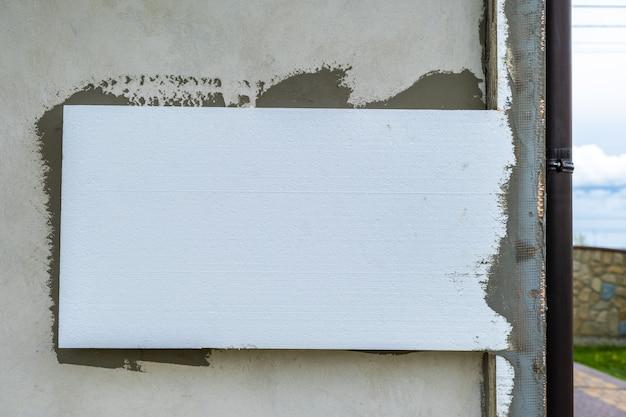Plaster of Paris is a versatile material commonly used for various construction and artistic purposes. From creating beautiful sculpture pieces to repairing interior walls, its applications are vast. But what about using plaster of Paris outdoors? Can it withstand the elements and retain its quality?
In this blog post, we will explore whether plaster of Paris can be used outside and how to make it more resistant to water damage. We will also discuss the potential health hazards associated with plaster of Paris and the importance of sealing it before painting. Additionally, we will delve into the disadvantages of plaster of Paris and explore alternative waterproofing methods for outdoor projects.
So, if you’re curious about the capabilities of plaster of Paris in outdoor settings and how to protect it from the elements, keep reading!
Can Plaster Of Paris Go Outside
Overview
If you’ve ever dabbled in arts and crafts, chances are you’ve encountered plaster of Paris. This versatile material has been a staple in the artistic world for centuries, but can it brave the great outdoors? Can plaster of Paris withstand the elements and add a touch of elegance to your outdoor space? Let’s find out!
The Vulnerability of Plaster of Paris
Is Plaster of Paris a Good Outdoor Option?
While plaster of Paris is renowned for its versatility and durability, it is not well-suited for outdoor use. This is primarily due to its vulnerability to moisture. Plaster of Paris is created by heating gypsum, and once it sets, it becomes rigid and brittle. Unfortunately, exposure to moisture can cause it to degrade and crumble over time.
The Wrath of Mother Nature
Mother Nature can be unforgiving, and her elements could prove a formidable challenge for plaster of Paris. Rain, snow, and fluctuating temperatures can wreak havoc on this delicate substance, causing it to crack, chip, or disintegrate altogether. So, if you’re envisioning a majestic garden sculpture or an elaborate outdoor centerpiece, it’s best to explore alternative materials that can withstand these outdoor foes.
Protecting Plaster of Paris Outdoors
Outdoor Decor Considerations
While plaster of Paris isn’t ideal for outdoor use, there are some steps you can take to enhance its durability if you simply can’t resist incorporating it into your outdoor decor. Consider these precautions:
1. Sealant to the Rescue
To protect your plaster of Paris creation from the elements, applying a sealant is crucial. Opt for a polyurethane or acrylic sealant specifically designed for outdoor use. This protective layer will help safeguard your artwork, reducing its exposure to moisture and extending its lifespan.
2. Shelter from the Storm
Providing a shield against the harsh outdoor environment is another way to prolong the life of your plaster of Paris pieces. If possible, consider placing your artwork in a covered area, such as a porch or an awning. This extra layer of protection will shield it from direct exposure to rain, snow, and extreme temperature fluctuations.
Alternative Materials for Outdoor Appliations
1. Concrete: The Reliable Option
When it comes to durability, few materials rival concrete. It can withstand the most unforgiving weather conditions and remain unscathed. Consider opting for concrete if you’re yearning for outdoor decor that will stand the test of time.
2. Ceramic: Beauty in the Elements
Ceramic is another fantastic choice for outdoor sculptures or decorative elements. It boasts excellent weather resistance and adds a touch of elegance with its smooth finish and vibrant colors. So, if you’re seeking an outdoor masterpiece, ceramic could be your go-to material.
3. Stone: A Timeless Classic
For a touch of timeless beauty, stone sculptures and decorations are hard to beat. Stone can withstand almost any weather condition with its natural strength and resilience. Whether you go for marble, granite, or limestone, your outdoor space will exude class and sophistication.
While plaster of Paris may be a cherished material for indoor artistic ventures, it is not suitable for long-lasting outdoor use. Its delicate structure makes it vulnerable to moisture and the wrath of Mother Nature. However, with proper sealing and protection, you can still enjoy its beauty as part of your outdoor decor. If you’re looking for materials that can truly brave the elements, concrete, ceramic, and stone are the go-to options. So, go forth and create stunning outdoor masterpieces that can withstand the test of time!
FAQ: Can Plaster of Paris Go Outside
Plaster of Paris is a versatile material often used for various DIY projects and crafts. While it is commonly used indoors, many people wonder whether plaster of Paris can be used outdoors. In this FAQ-style subsection, we will address some frequently asked questions regarding the use of plaster of Paris outside.
What is Plaster of Paris Used For
Plaster of Paris, a type of gypsum plaster, has a wide range of applications. It is primarily used for creating molds and casts, as it has excellent molding properties and sets quickly. Additionally, plaster of Paris is often used for art projects, sculptures, and even medical bandages.
Can Plaster be Used Outdoors
While plaster of Paris is primarily designed for indoor use, it can be utilized outdoors with some precautions. However, it is important to note that plaster of Paris is not inherently weather-resistant or waterproof. Therefore, extra steps need to be taken to ensure its durability and longevity when used outside.
How Do You Waterproof an External Brick Wall
To waterproof an external brick wall, you can apply a waterproof sealer or coating specifically designed for masonry surfaces. This will help prevent water penetration and protect the plaster of Paris from moisture damage.
Is Plaster of Paris Harmful to Health
Plaster of Paris is generally considered safe to handle when used as intended. However, prolonged exposure to the fine dust particles during mixing or sanding can irritate the respiratory system. It is essential to use proper protective equipment, such as a dust mask, and work in a well-ventilated area to minimize any potential health risks.
Do I Need to Seal Plaster of Paris Before Painting
Yes, it is highly recommended to seal plaster of Paris before painting, especially if it will be exposed to outdoor elements. Applying a primer or sealer will help create a barrier between the plaster and the paint, ensuring better adhesion and protection against moisture.
Can Plaster of Paris Resist Water
Plaster of Paris is not naturally water-resistant or waterproof. When exposed to moisture, it can absorb water and eventually break down. However, there are methods to waterproof plaster of Paris, which we will discuss later in this section.
What Happens if Plaster of Paris Gets Wet
If plaster of Paris gets wet, it can soften, crumble, or even dissolve. Moisture weakens the structural integrity of the plaster, causing it to lose its strength and shape. Therefore, protecting plaster of Paris from moisture is crucial, particularly when using it outdoors.
How Do You Waterproof Plaster of Paris for Outdoors
To waterproof plaster of Paris for outdoor use, you can apply a clear waterproof sealer or varnish specifically designed for porous materials. Ensure that the sealer completely covers the plaster, preventing water from seeping into its pores. Reapply the sealer periodically to maintain its effectiveness.
How Do You Protect Outdoor Walls from Rain
To protect outdoor walls, including those with plaster of Paris, from rain, you can consider applying a waterproof paint or coating. This will create a protective barrier, preventing water from penetrating the surface and damaging the plaster. Regular maintenance and inspection of the walls are also essential to identify and address any signs of water damage promptly.
Does Plaster of Paris Shrink When it Dries
Yes, plaster of Paris has a tendency to shrink as it dries. This natural shrinkage can cause cracks or deformities in the plaster. To minimize shrinkage, it is advisable to mix plaster of Paris with the appropriate amount of water as specified by the manufacturer’s instructions.
What are the Disadvantages of Plaster of Paris
While plaster of Paris has its advantages, such as ease of use and quick setting time, it also has some disadvantages. These include its susceptibility to water damage, shrinkage during drying, and limited weather resistance. Understanding these limitations and taking appropriate measures can help mitigate potential issues.
Is Exterior Plaster Waterproof
Exterior plaster, also known as exterior stucco, is typically not waterproof on its own. It requires additional measures, such as the application of waterproof coatings or sealers, to ensure its resistance to moisture. Similar precautions apply when using plaster of Paris outdoors.
Does Plaster of Paris Get Hard
Yes, plaster of Paris hardens when it dries. It goes through a chemical reaction called hydration, where it combines with water and gradually solidifies. Once fully hardened, it forms a solid, durable material that can be painted or further treated.
How Do You Waterproof Gypsum Plaster
To waterproof gypsum plaster, you can follow similar methods as with plaster of Paris. Apply a clear waterproof sealer or varnish designed for porous surfaces, ensuring full coverage. Regularly inspect and reapply the sealer as necessary for continued protection against moisture.
What Do You Seal Plaster of Paris With
To seal plaster of Paris, you can use a variety of sealers or primers, such as clear acrylic sealers or oil-based primers. These products create a protective barrier that helps prevent moisture absorption and enhances the adhesion and durability of subsequent layers of paint.
Does Plaster of Paris Melt in Water
Plaster of Paris does not melt when exposed to water. However, it can absorb water, causing it to become soft and lose its structural integrity. Therefore, it is essential to protect plaster of Paris from prolonged exposure to moisture.
Can You Plaster Exterior Walls
Yes, it is possible to plaster exterior walls, including those made of brick, concrete, or other suitable materials. When plastering exterior walls, it is crucial to choose an appropriate plaster mix and ensure proper surface preparation. Additionally, applying a waterproof sealer or coating can help protect the plaster from weather-related damage.
Can Plaster Be Waterproofed
Yes, plaster can be waterproofed by applying a waterproof sealer, coating, or varnish. These products create a protective layer, preventing water from directly interacting with the plaster. Waterproofing is particularly important when using plaster in outdoor or high-moisture environments.
How Do I Make Plaster of Paris Shiny
To achieve a shiny finish on plaster of Paris, you can apply a gloss sealer or varnish once the plaster has fully dried and cured. This will add a lustrous sheen and provide a protective coating to enhance its appearance and durability.
What Do You Seal Plaster With
To seal plaster, you can use various sealers, such as clear acrylic sealers or oil-based primers. These products help protect the plaster’s surface, enhance adhesion for subsequent layers, and provide a smooth finish for painting or other treatments.
Mastering the Art of Plaster of Paris Outdoors
With proper precautions and the right treatments, plaster of Paris can indeed be used outdoors. By taking the necessary steps to waterproof and protect it from the elements, you can unleash your creativity and bring the versatility of plaster of Paris beyond the walls of your home. So, go ahead, create stunning outdoor sculptures or breathe new life into your garden with the magic of plaster!

